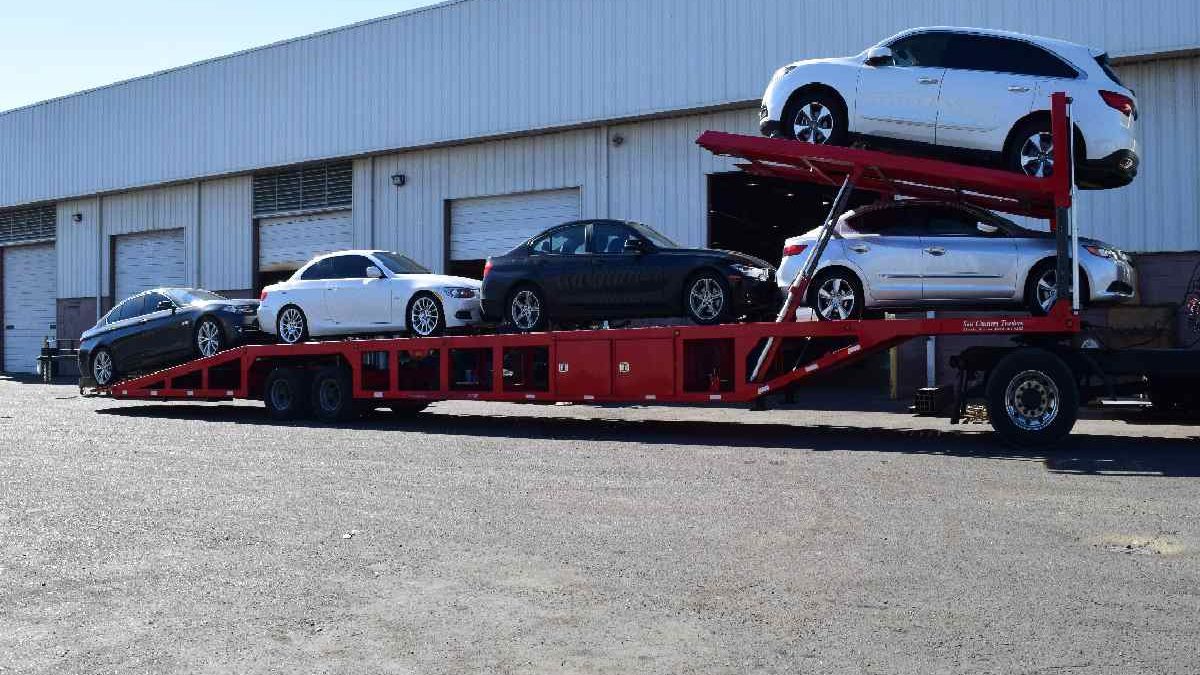Car haulers, whether they are open or enclosed trailers, are an excellent means of transporting your vehicle for a long-distance move, a race event, or when you need to move an extra vehicle. However, successfully loading a car onto a car hauler and safely towing it requires careful planning and execution. In this article, we’ll discuss the step-by-step process to load your car onto a car hauler and ensure a safe journey.
Table of Contents
1. Choose the Right Car Hauler
Before you begin the loading process, it’s essential to choose the right car hauler for your vehicle. Consider the size and weight capacity of the trailer, ensuring it can comfortably accommodate your car. Verify that the trailer’s towing capacity matches that of your towing vehicle. If you’re unsure, consult the owner’s manual for both your car and trailer or seek advice from a professional.
2. Gather the Necessary Equipment
You’ll need a few essential tools and equipment to ensure a smooth loading process. These include:
– Ramps or loading boards: To bridge the gap between the ground and the trailer.
– Tow straps or chains: For securing your car onto the trailer.
– Wheel chocks: To prevent any rolling movement during loading.
– A spotter: A trusted friend or family member who can guide you during the process.
3. Prepare Your Towing Vehicle
Before you start loading your car, make sure your towing vehicle is adequately prepared. Ensure the trailer hitch and safety chains are securely attached to your vehicle’s frame, and the trailer’s lights are properly connected and working. Additionally, check your vehicle’s brakes and tire pressure to ensure they are in good condition.
4. Position the Car Hauler
Park the car hauler on a level surface and in a location that allows enough space for the loading process. Ensure the trailer is securely connected to your towing vehicle, and the trailer’s wheel chocks are in place to prevent any movement.
5. Create a Loading Plan
Plan how you will load your car onto the hauler. Determine which end of the trailer the car should go on, considering weight distribution. It’s typically a good practice to load the heaviest part of the car (usually the engine) towards the front of the trailer to achieve proper balance. Make sure the ramps or loading boards are positioned correctly to provide a smooth transition onto the trailer.
6. Drive the Car onto the Trailer
With a spotter guiding you, slowly drive your car onto the car hauler. Ensure that the car’s wheels align with the ramps or loading boards. Use a steady, controlled speed to avoid sudden acceleration or braking, which can cause damage to the car or trailer.
7. Secure the Car in Place
Once your car is on the trailer, it’s essential to secure it in place to prevent any movement during transportation. Use tow straps or chains to tie down the car to the designated anchor points on the trailer. Make sure the straps are tight, but not overly so, as you don’t want to damage the car’s suspension or frame.
8. Check the Car’s Clearance
Ensure that your car has enough clearance from the trailer’s body, ramps, or loading boards. The suspension should have some give to absorb shocks and vibrations during transport. Check for any obstructions underneath your car that could make contact with the trailer.
9. Verify All Safety Measures
Before you hit the road, it’s crucial to double-check all safety measures. This includes verifying that the car is securely fastened to the trailer, and all straps or chains are properly tensioned. Ensure the trailer’s lights are working correctly and check the brakes one more time.
10. Practice Safe Towing
Once your car is loaded and secure, it’s time to begin the towing process. Safe towing involves several critical considerations:
– Adhere to speed limits: Obey posted speed limits and drive at a safe speed, especially when towing a heavy load.
– Maintain a safe distance: Leave extra space between your towing vehicle and the vehicle in front of you to allow for safe braking.
– Use proper mirrors: Adjust your side mirrors to have a clear view of the car hauler and the loaded vehicle.
– Check trailer sway: If you experience trailer sway, gently apply the trailer brakes to regain control and reduce speed if necessary.
– Brake gradually: Give yourself extra distance to brake, and apply the brakes gently to avoid sudden stops.
11. Monitor Your Load
While on the road, frequently check your rearview mirrors to ensure your car and trailer are secure and that no issues have arisen during transit. Also, be vigilant for any signs of sway or instability and make adjustments as necessary. Stop to check your load frequently.
12. Prepare for Unloading
Once you reach your destination, carefully prepare for unloading. Ensure you have a clear, level spot to unload the car. Chock the wheels of the trailer and follow the steps in reverse order to safely unload your vehicle.
In conclusion, loading a car onto a car hauler and safely towing it requires careful planning, attention to detail, and adherence to safety measures. By following the steps outlined in this article, you can ensure a smooth loading process and a secure journey for your vehicle. Remember that safe towing practices, regular checks, and responsible driving are key to a successful and trouble-free car trailer experience.


